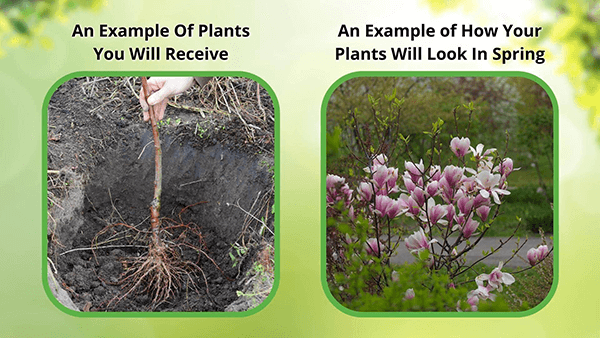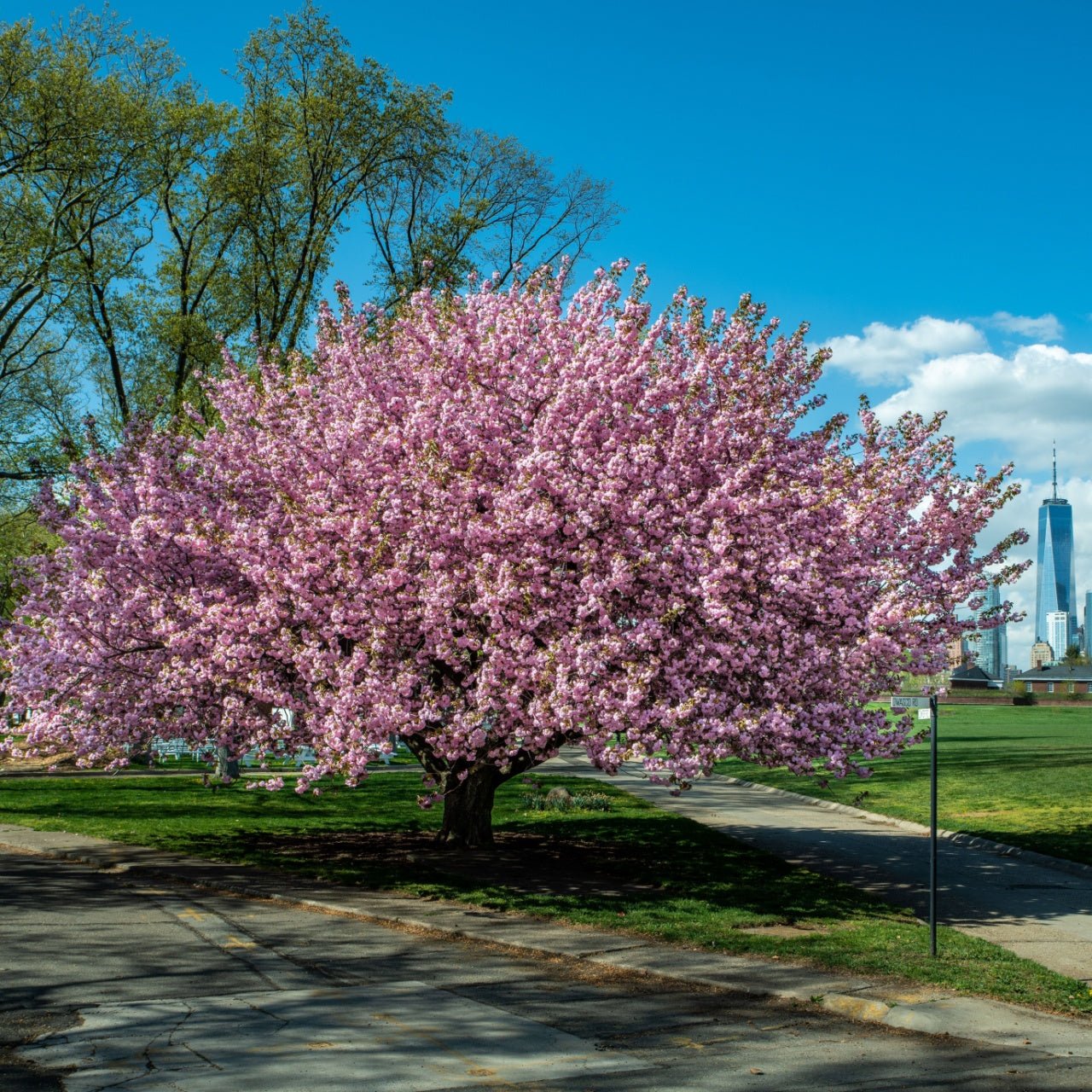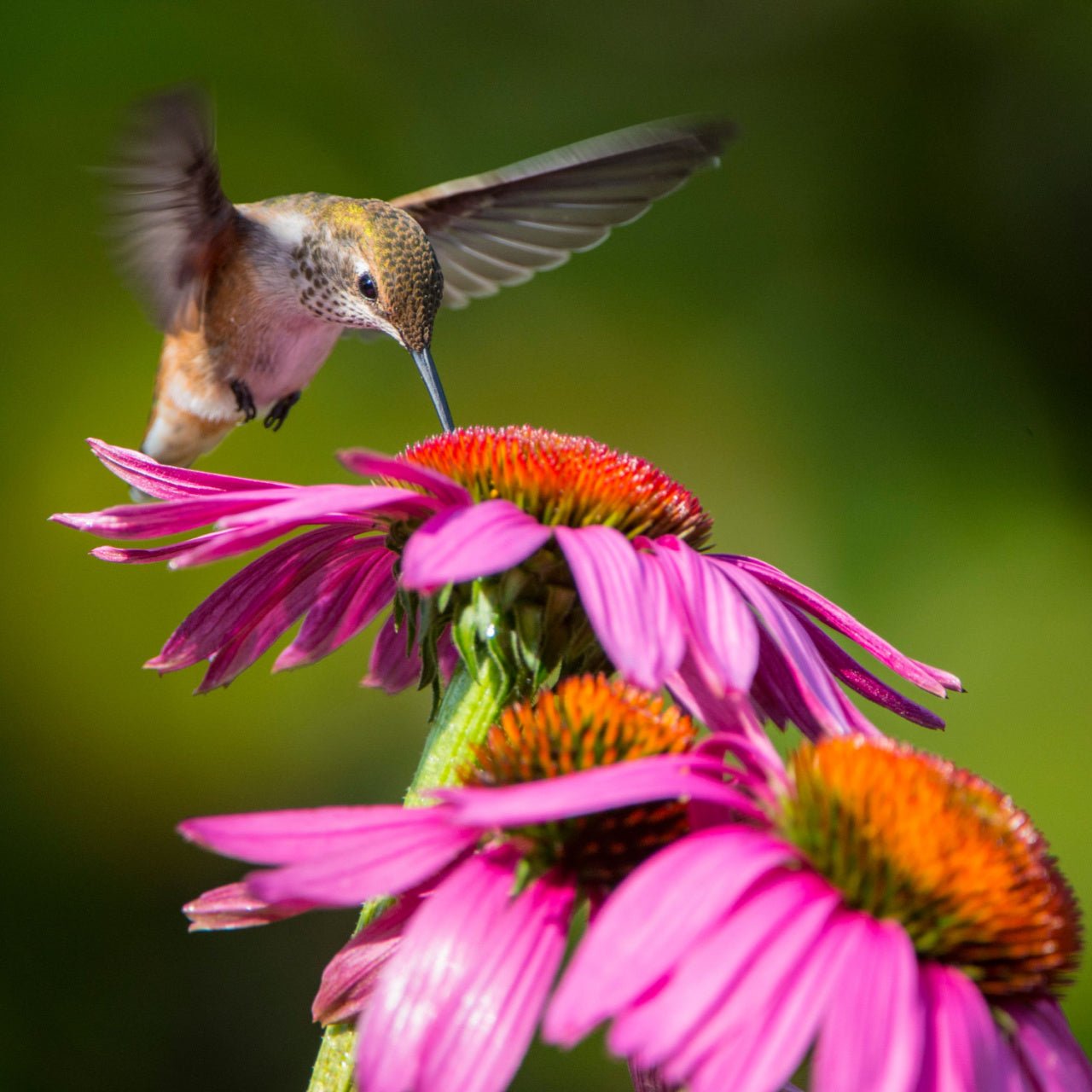


Burr Oak Tree
Thrives in
ZONE 3ZONE 4ZONE 5ZONE 6ZONE 7ZONE 8This plant ships:
November 20251 Year Guarantee on all plants
Burr Oak Trees For Sale
Burr Oak Tree (Quercus macrocarpa) is a beautiful deciduous tree that will create enormous impact on your landscape. As it grows it will create a wide canopy, as it often grows out horizontally more than it grows vertically.
Plant Details - Burr Oak Tree
Family: Fagaceae
Light Requirement: Full Sun
Water Needs: Moist
Height: 60 – 80 ft.
Spread: 60 – 80 ft.
Growth Rate: Fast
Bloom Time: Spring
Flower Color: Yellow
Wildlife Value: Attracts birds
Landscape Uses and Maintenance - Burr Oak Tree
The Burr Oak Tree is a native deciduous tree that grows in open woodlands, and near water, such as on the banks of rivers.
This is an excellent tree for planting in the landscape, creating a shade garden, or as a city street tree. Branches are large and horizontal.
Its leaves are green, rounded, and are deeply lobed. Catkins are not showy and are yellow in color.
This is a low maintenance tree that will not need much direct care as it ages.
Plant this tree it in a location with full sun. Avoid planting it in a place with partial to full shade, where its growth will be limited.
Plant this tree in well draining and acidic soil. Water this tree thoroughly and deeply when you first plant it until the tree is well established in its new location. Avoid planting in compacted or wet soil.
This is a deer resistant tree. Protect your new tree when it is young and vulnerable to damage by deer and small mammal browsing, or buck rub, with caging.
This tree is drought resistant. In extended droughts, you should water.
You will not need to fertilize this tree; however, a balanced tree fertilizer can help improve overall health.
Watch your tree for signs of insect presence, including that of the Gypsy moth.
It makes great habitat for nesting birds, and its acorns are eaten by them and small mammals.
Noteworthy Characteristics
Burr Oak Tree has very unique, large caps that top the acorns. Another common name, “mossycup”, describes how the caps seem to be fuzzy or covered in moss-like tendrils.
This Is How Your Plants Will Look upon Delivery

Height at Maturity
Over 25 Feet
Care
Burr Oak trees thrive in well-drained soils and require moderate water, especially during dry periods. They are highly adaptable but benefit from occasional pruning to maintain shape. Fertilize annually in early spring to support healthy growth.
Plant Reproduction
Burr Oak spreads through acorns, which fall and germinate
Shipping date depends on the date displayed and chosen when you order from the product's page.
We only accept returns on plants verified dead. If you think your plants have died, we offer a 1 year warranty, please use this File a Claim Link to verify dead plants and start with return warranty process.




Caring Tips
How do I care for my Burr Oak Tree?
Each box contains detailed care instructions and information about your product. But here's the basics.
Care Tips
Burr Oak trees thrive in well-drained soils and require moderate water, especially during dry periods. They are highly adaptable but benefit from occasional pruning to maintain shape. Fertilize annually in early spring to support healthy growth.
Light Requirements
The Bur Oak Tree thrives best in full sun to partial shade. It prefers at least 6 hours of direct sunlight daily but can tolerate some shade, particularly in hot climates. Ensure it gets adequate light for robust growth and optimal health.
Hardy Planting Zones
3 • 4 • 5 • 6 • 7 • 8
Header
Use this content to share information about your store and products.
Frequently Asked Questions
How often should I water my plants?
How do I know if my plant is getting too much or too little sunlight?
What should I do to prepare my plants for winter?
What are the signs that my plant needs fertilizing?
How can I prevent pests from damaging my plants?
How do I choose the right plant for my climate zone?






